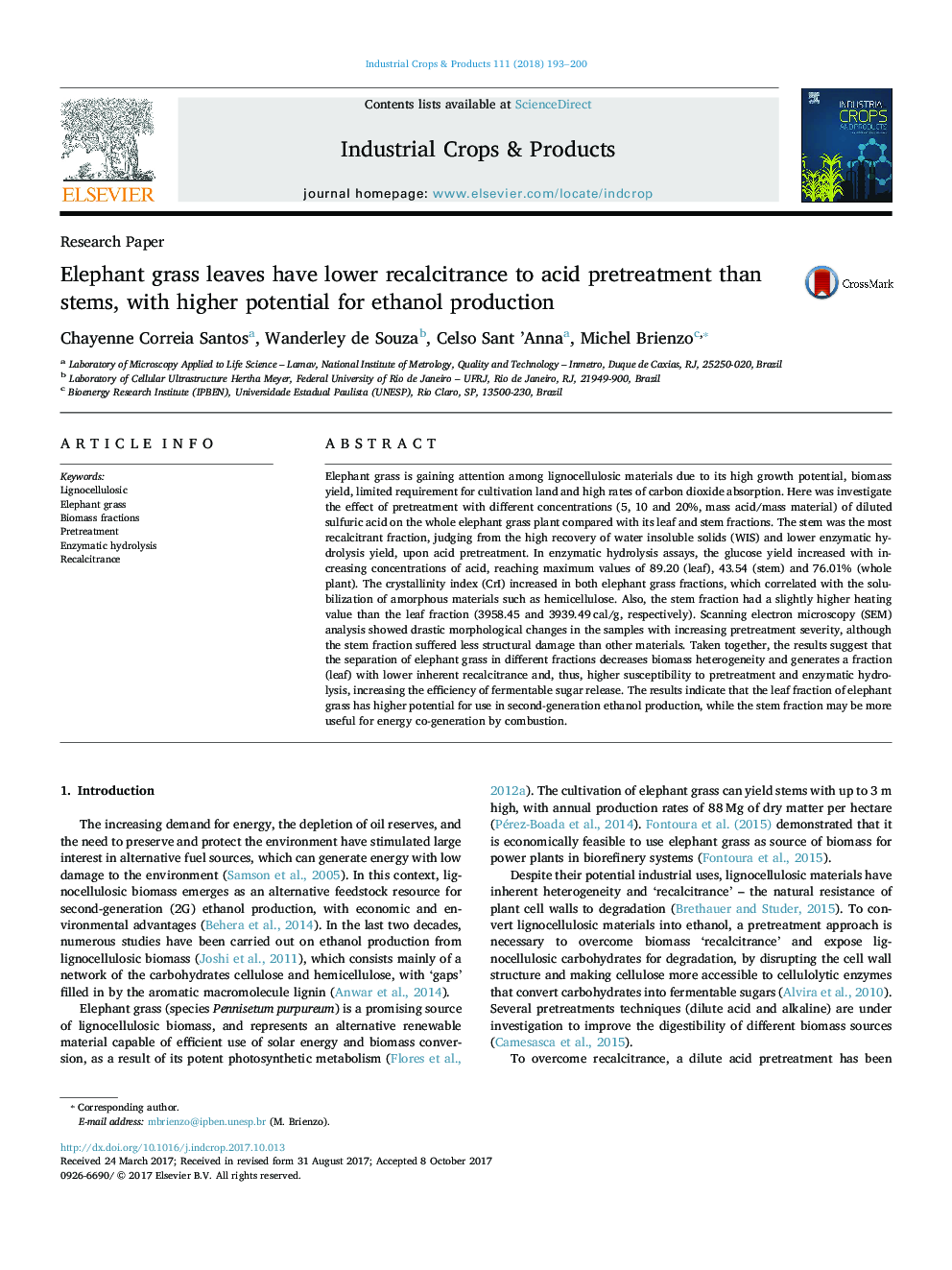| کد مقاله | کد نشریه | سال انتشار | مقاله انگلیسی | نسخه تمام متن |
|---|---|---|---|---|
| 5761660 | 1624799 | 2018 | 8 صفحه PDF | دانلود رایگان |
عنوان انگلیسی مقاله ISI
Elephant grass leaves have lower recalcitrance to acid pretreatment than stems, with higher potential for ethanol production
ترجمه فارسی عنوان
برگ چمن فیل ها دارای تردید کمتر برای پیشگیری از اسید نسبت به ساقه است، با پتانسیل بالاتری برای تولید اتانول
دانلود مقاله + سفارش ترجمه
دانلود مقاله ISI انگلیسی
رایگان برای ایرانیان
کلمات کلیدی
لیگنوسلولز، چمن فیل، فراوانی زیست توده، پیش درمان هیدرولیز آنزیمی، احترام
موضوعات مرتبط
علوم زیستی و بیوفناوری
علوم کشاورزی و بیولوژیک
علوم زراعت و اصلاح نباتات
چکیده انگلیسی
Elephant grass is gaining attention among lignocellulosic materials due to its high growth potential, biomass yield, limited requirement for cultivation land and high rates of carbon dioxide absorption. Here was investigate the effect of pretreatment with different concentrations (5, 10 and 20%, mass acid/mass material) of diluted sulfuric acid on the whole elephant grass plant compared with its leaf and stem fractions. The stem was the most recalcitrant fraction, judging from the high recovery of water insoluble solids (WIS) and lower enzymatic hydrolysis yield, upon acid pretreatment. In enzymatic hydrolysis assays, the glucose yield increased with increasing concentrations of acid, reaching maximum values of 89.20 (leaf), 43.54 (stem) and 76.01% (whole plant). The crystallinity index (CrI) increased in both elephant grass fractions, which correlated with the solubilization of amorphous materials such as hemicellulose. Also, the stem fraction had a slightly higher heating value than the leaf fraction (3958.45 and 3939.49Â cal/g, respectively). Scanning electron microscopy (SEM) analysis showed drastic morphological changes in the samples with increasing pretreatment severity, although the stem fraction suffered less structural damage than other materials. Taken together, the results suggest that the separation of elephant grass in different fractions decreases biomass heterogeneity and generates a fraction (leaf) with lower inherent recalcitrance and, thus, higher susceptibility to pretreatment and enzymatic hydrolysis, increasing the efficiency of fermentable sugar release. The results indicate that the leaf fraction of elephant grass has higher potential for use in second-generation ethanol production, while the stem fraction may be more useful for energy co-generation by combustion.
ناشر
Database: Elsevier - ScienceDirect (ساینس دایرکت)
Journal: Industrial Crops and Products - Volume 111, January 2018, Pages 193-200
Journal: Industrial Crops and Products - Volume 111, January 2018, Pages 193-200
نویسندگان
Chayenne Correia Santos, Wanderley de Souza, Celso Sant 'Anna, Michel Brienzo,
